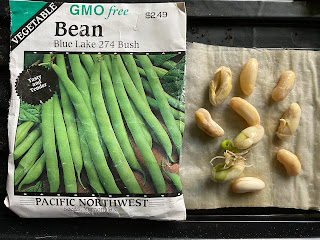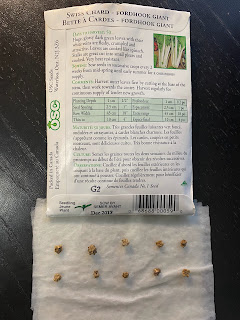Gardening is a game of patience. You sow your seeds and wait with bated breath until you see the seedlings emerge. For those of us with a "healthy" stockpile of seeds left over from past seasons, it can be an unwelcome surprise to find that they don't last forever. The seeds you planted weeks ago have failed to germinate, and now you need a change of plans (or, should I say, plants). I experienced this firsthand recently, and wanted to share the results of my own experiment.
What is seed germination?
Seed germination is the process by which a plant grows from a seed. It starts when the seed takes up water, which triggers enzymes to break down stored food inside the seed. Once the food is broken down, it provides the energy for the plant embryo to grow roots, a stem, and leaves.
Which seeds are less likely to stay viable after multiple years?
While some seeds can last for decades, others lose viability quickly. The general consensus is that the following types of seeds are unlikely to stay viable after multiple years:
- Onion and leek
- Parsley and parsnip
- Corn, pepper, and eggplant
- Tomato (can last up to 4 years, but germination rate drops quickly past year 1)
Testing the germination rate of old seeds
How to Guide
To test the germination rate of your seeds, you'll need a few things:
- Seeds
- Soft paper product that will hold water, ex: paper towel or coffee filter
- Water
- Plastic bag (optional)
- Permanent marker (optional)
Steps:
- Soak the paper towel or coffee filter with water and then squeeze the excess water out, leaving it damp.
- Place the old seeds on the damp paper towel or coffee filter, leaving some space between each seed. I recommend using 10 seeds just to make the percentage calculation easy. The more seeds you use, the more accurate your result will be.
- Fold the paper towel or coffee filter over the seeds so that they are fully covered.
- Optional: Put the folded paper towel or coffee filter in the plastic bag and seal it. If you don't do this, you just need to keep an eye on the paper to ensure that it doesn't dry out.
- Optional: Label the bag with the date and the name of the seed. Alternatively, take a photo of the seeds & seed pack together so the date & info is stored in your phone.
- Put the bag in a warm, dark place like a closet or drawer.
- Research the "time to germinate" for the specific seed you're testing, and check the seeds after that amount of time to see if they have started to germinate. Some seeds will germinate quickly, while others may take up to 3 weeks.
- After another week or so, count the number of seeds that have germinated and divide by the total number of seeds. This will give you the germination rate.
- If the germination rate is too low (the threshold is up to you, I would use 50%), it's best to discard the old seeds and purchase new ones.
Real-life Results
Conclusion
If you kept track, only 4 out of the dozen packets of seeds were not total garbage, and the jury's still out on 2 more of them. Please learn from my mistakes. In general, it's best to use fresh seeds whenever possible. If you have a pack of seeds that seems suspiciously (or obviously) old, it's probably not even worth the effort to test them out. Time lost in the growing season can never be recuperated, so it's a good idea to test the germination rate of any questionable seeds before planting them.



























Comments
Post a Comment